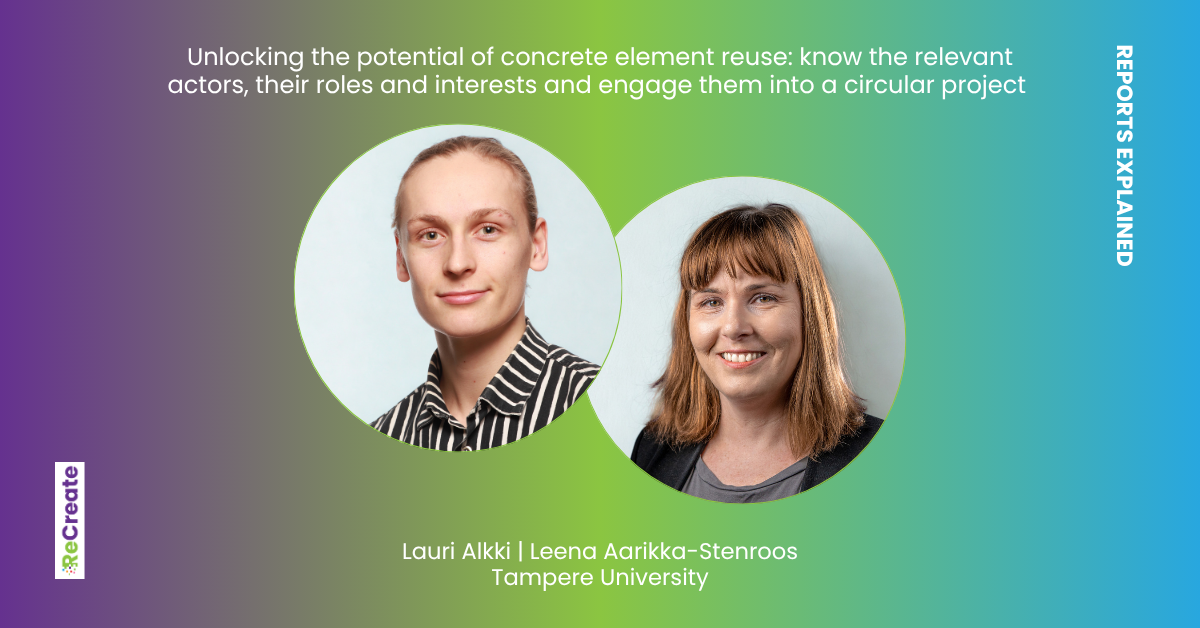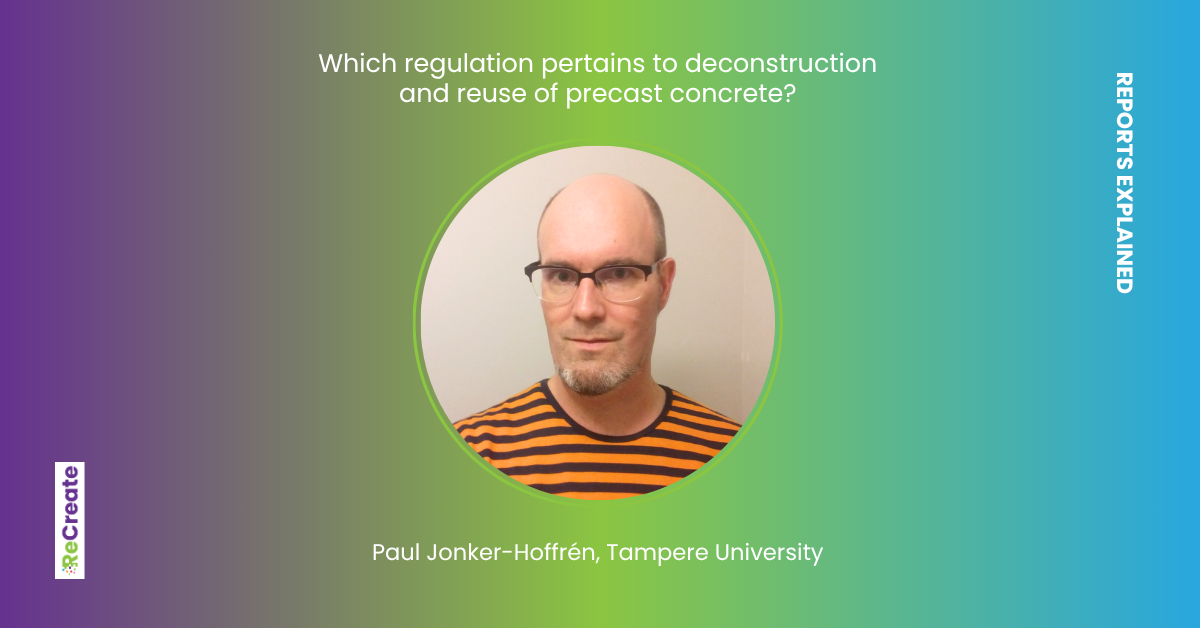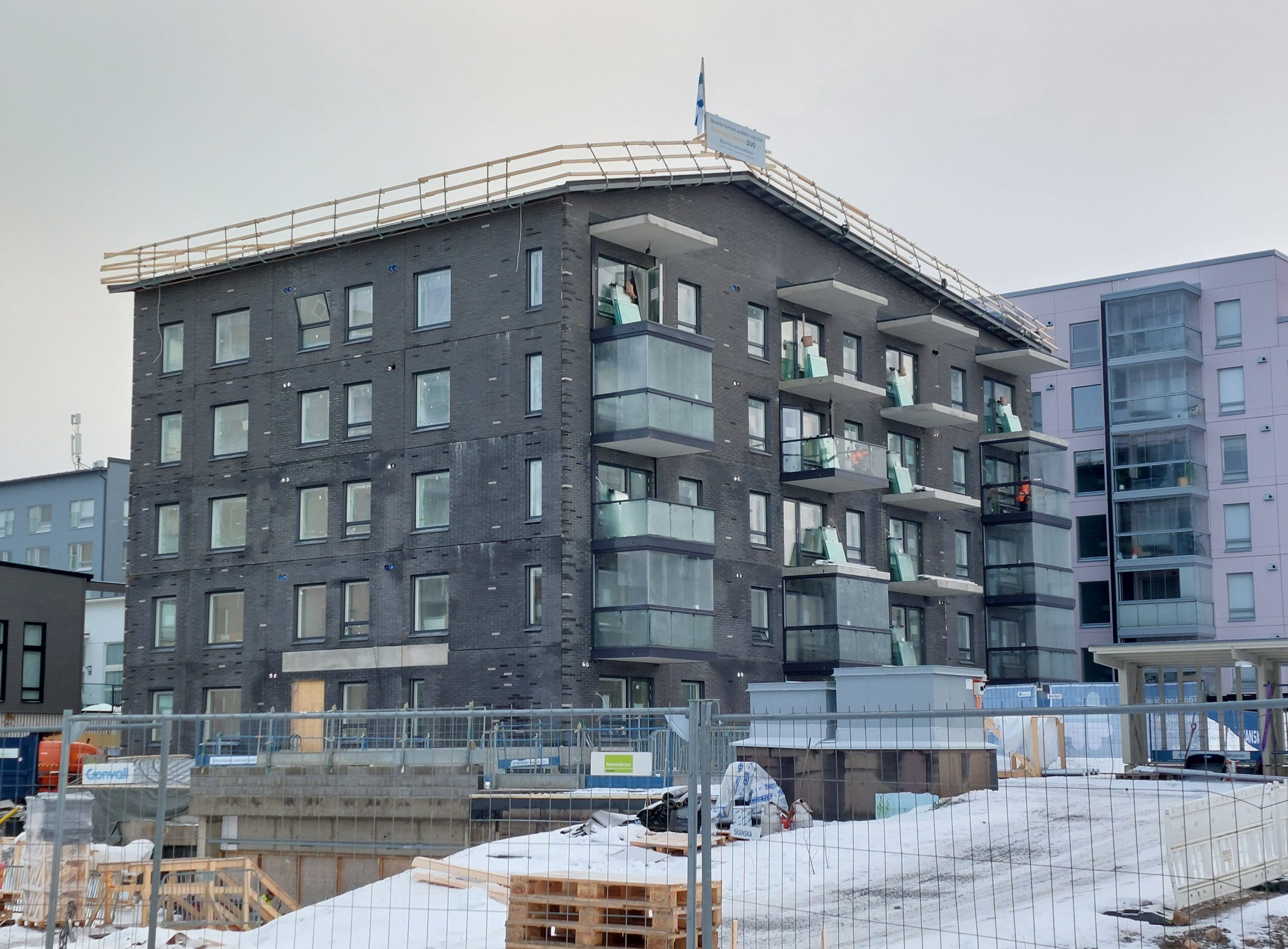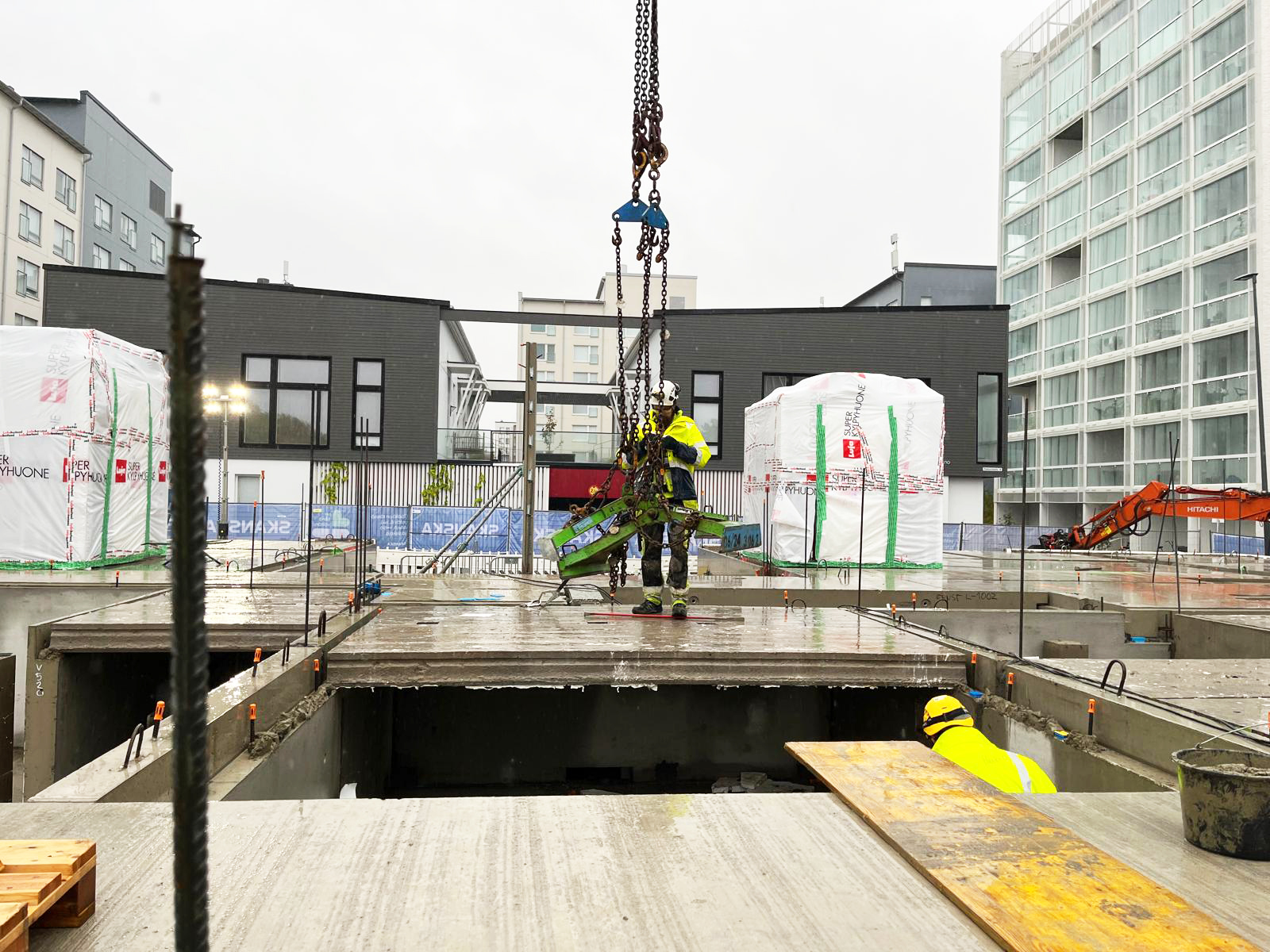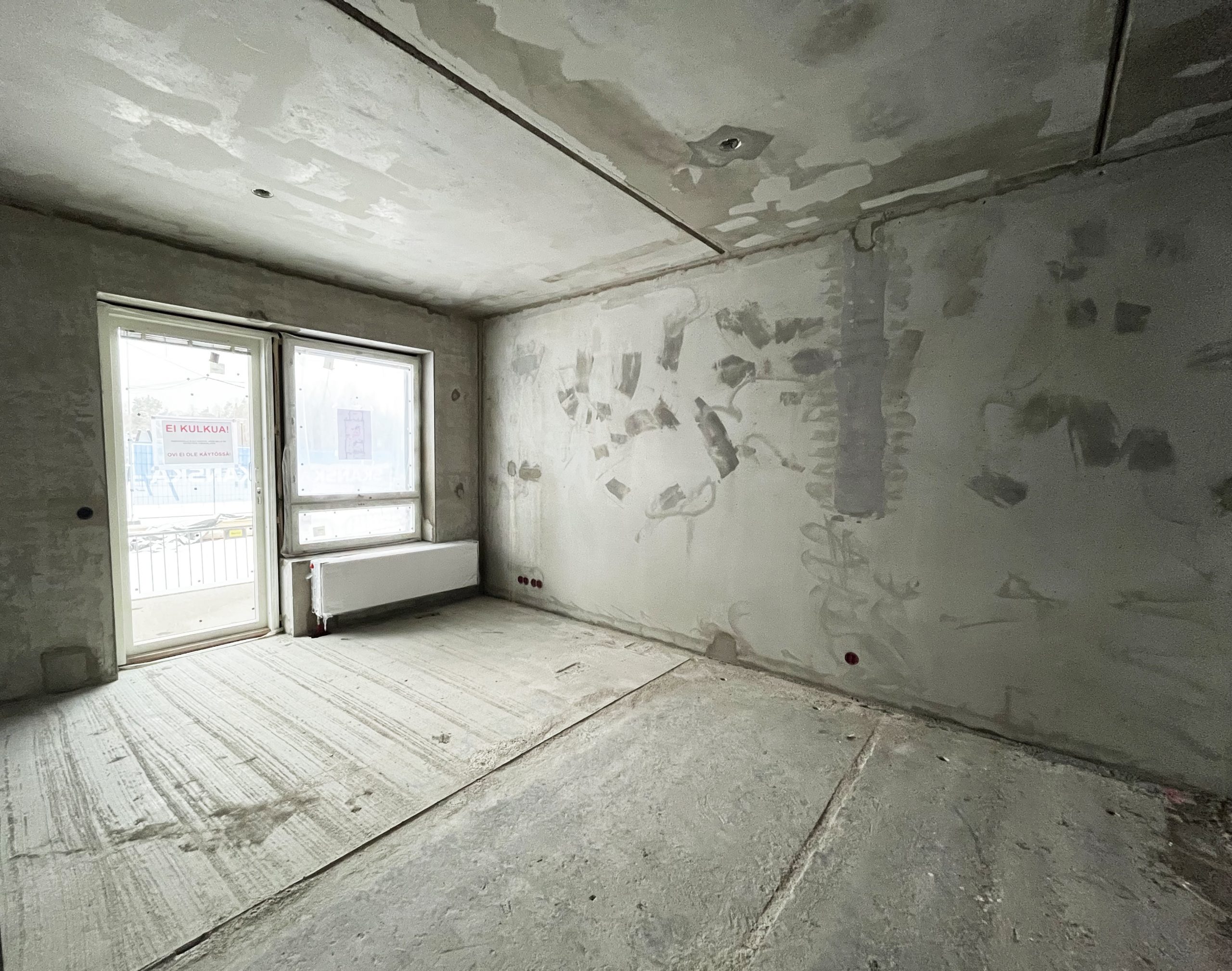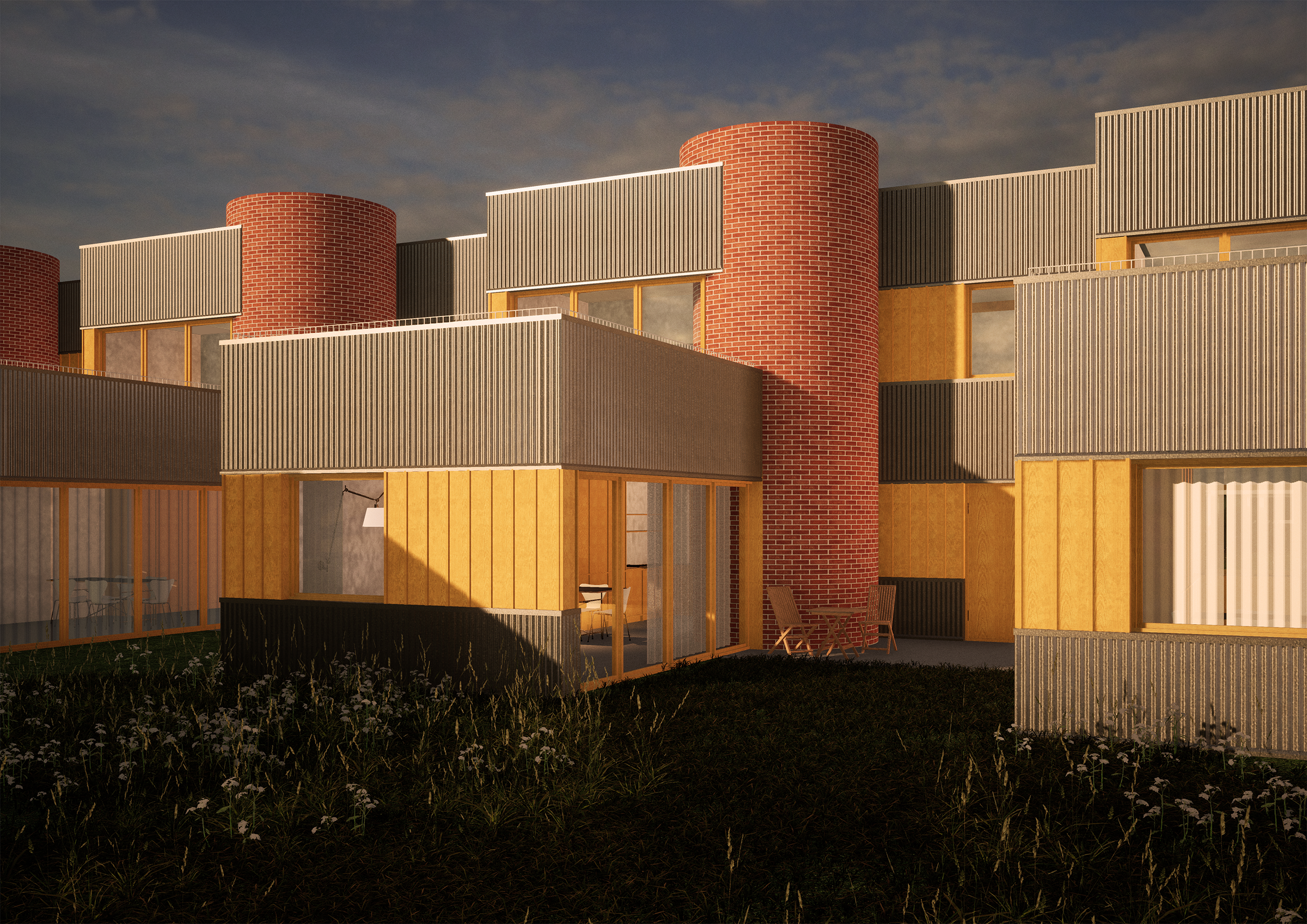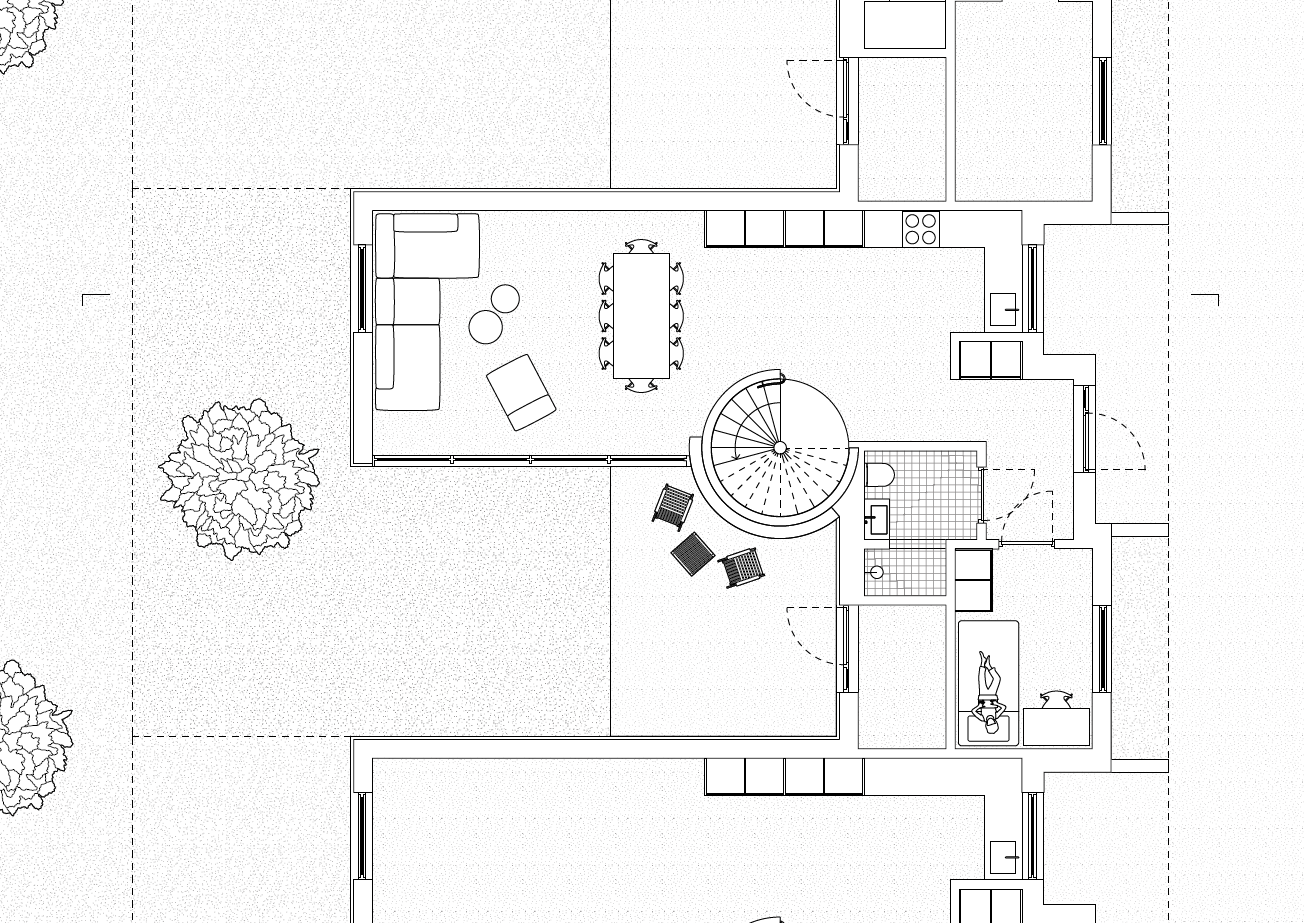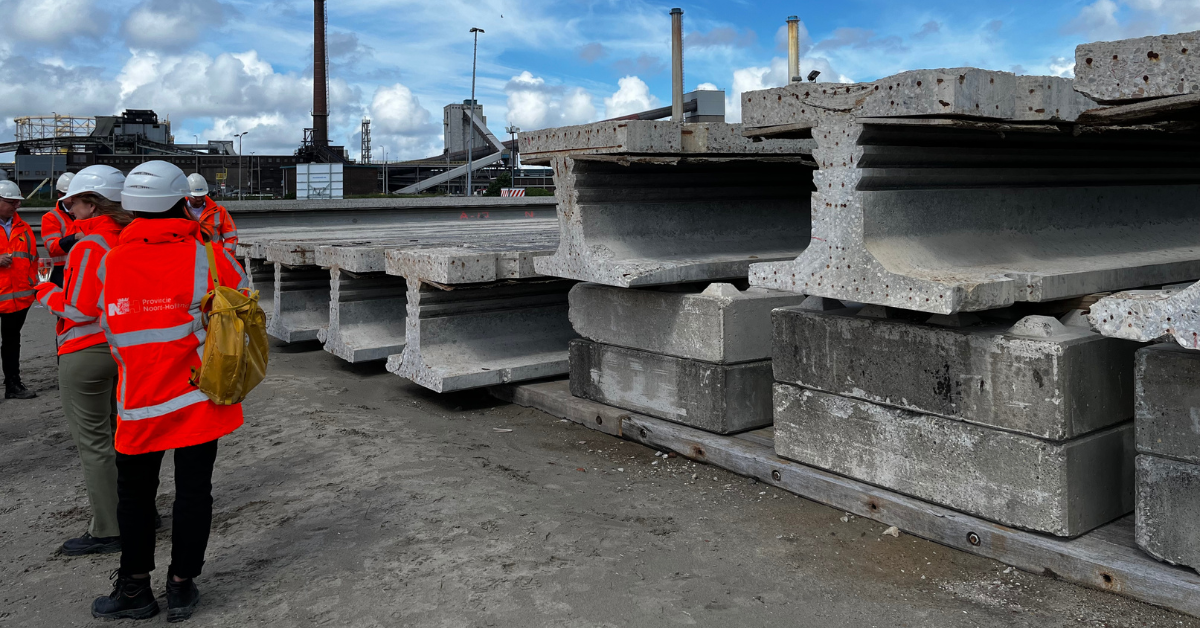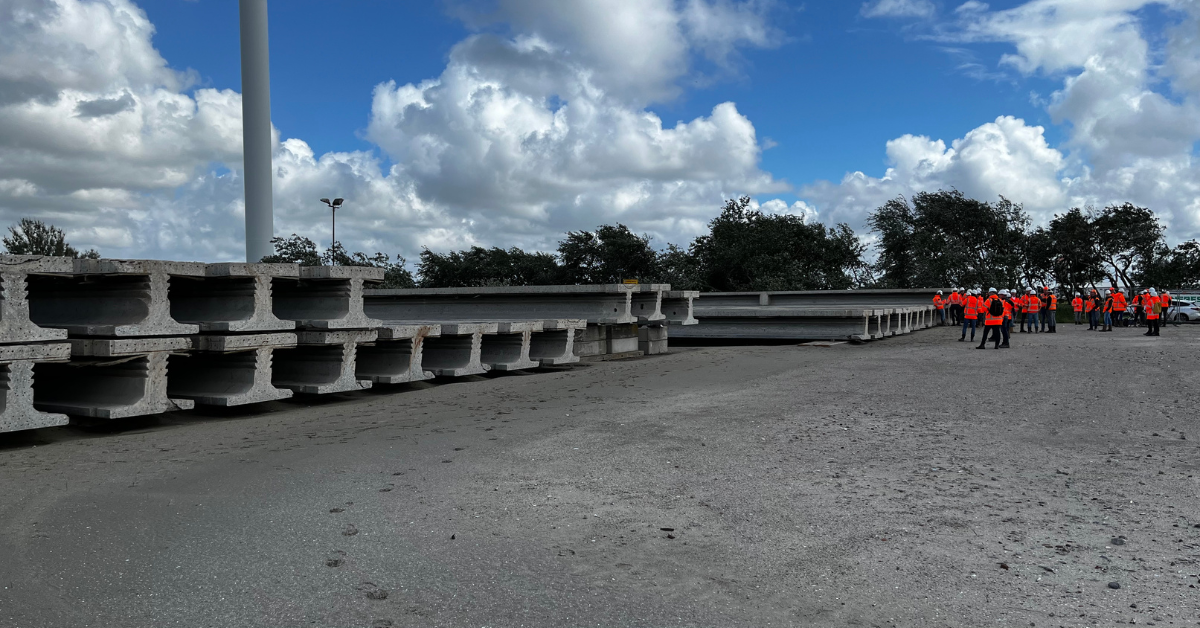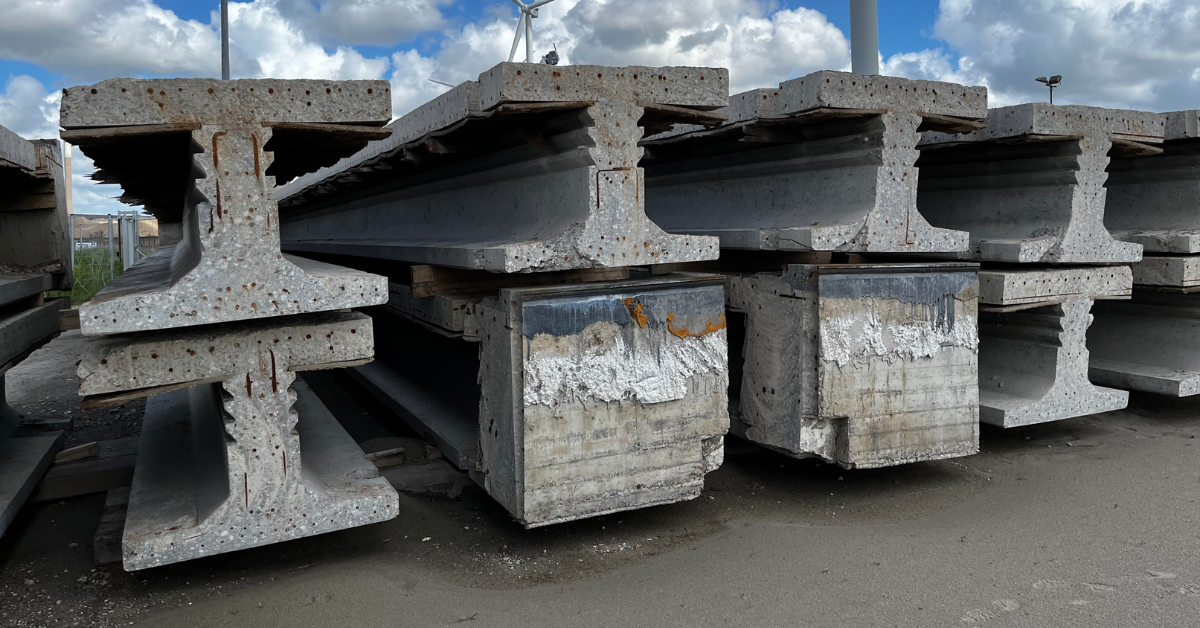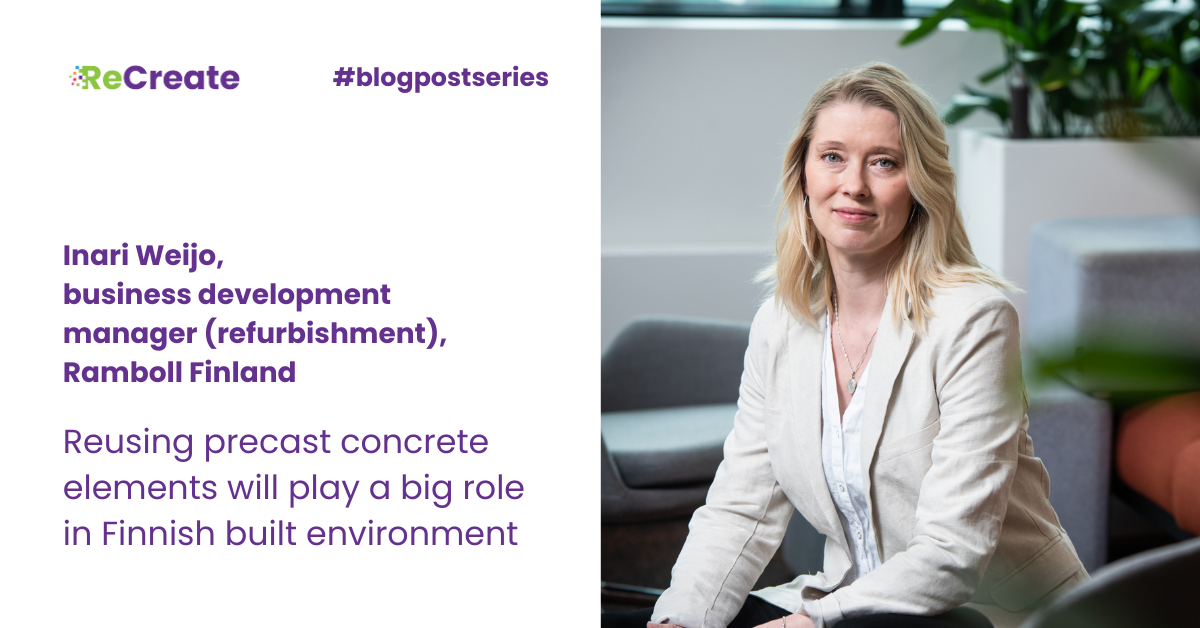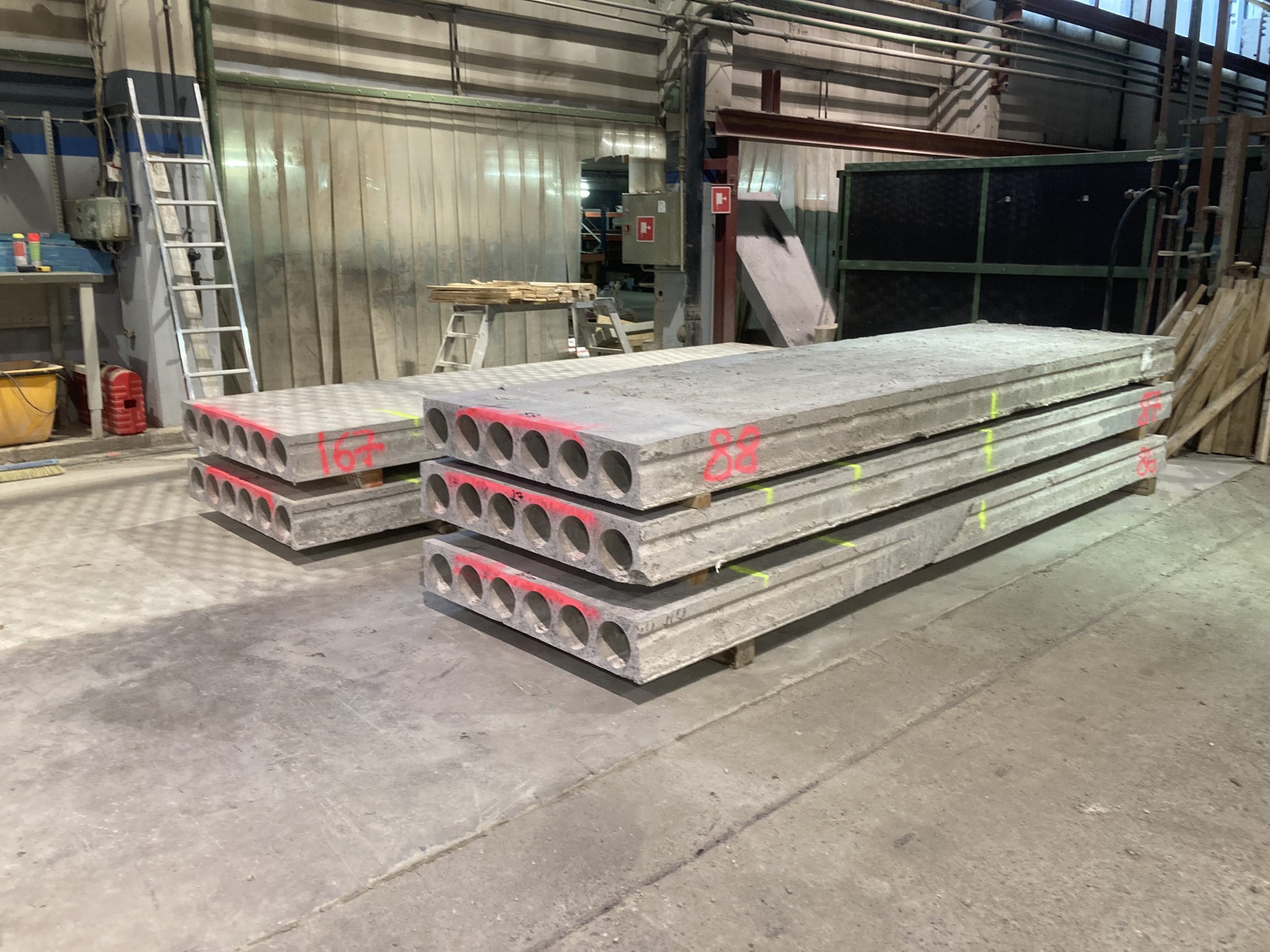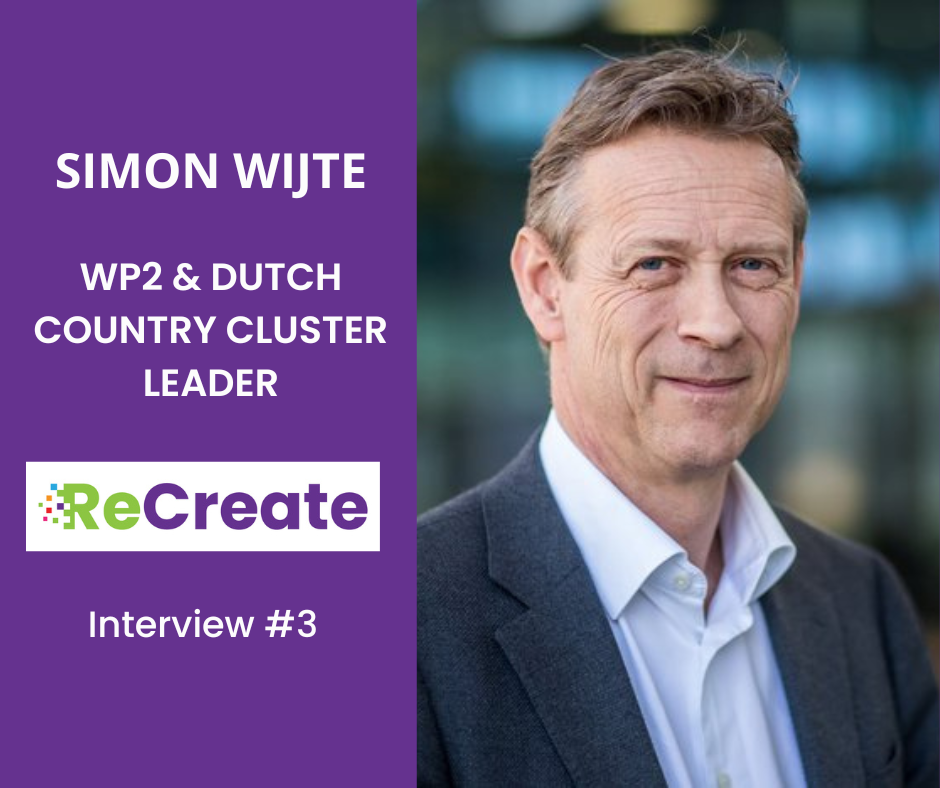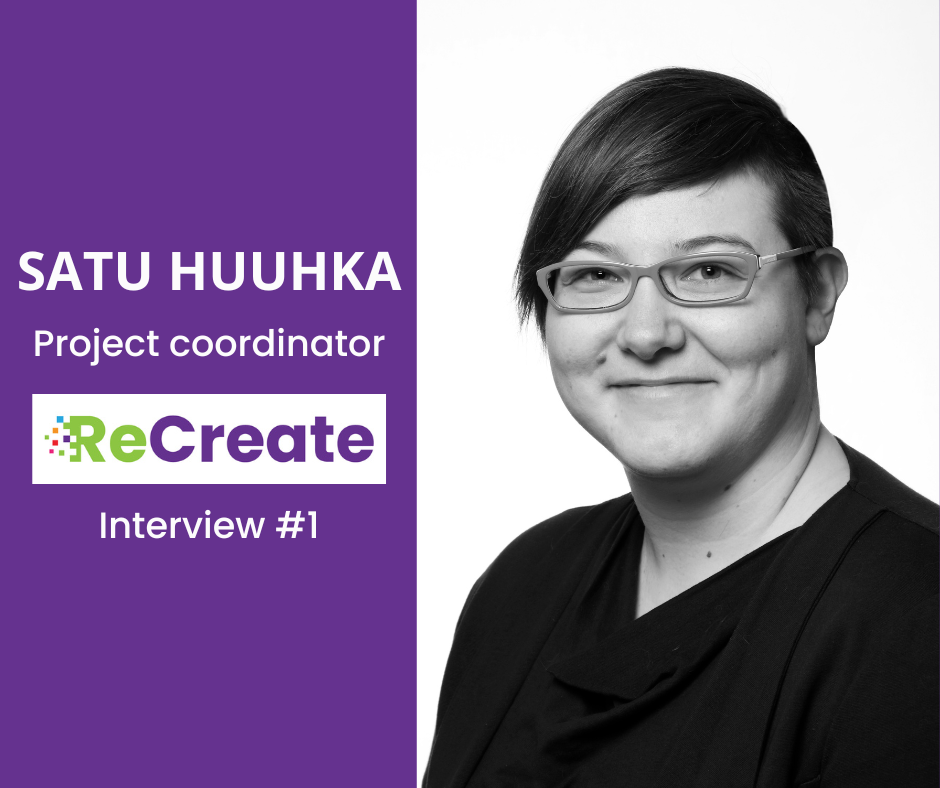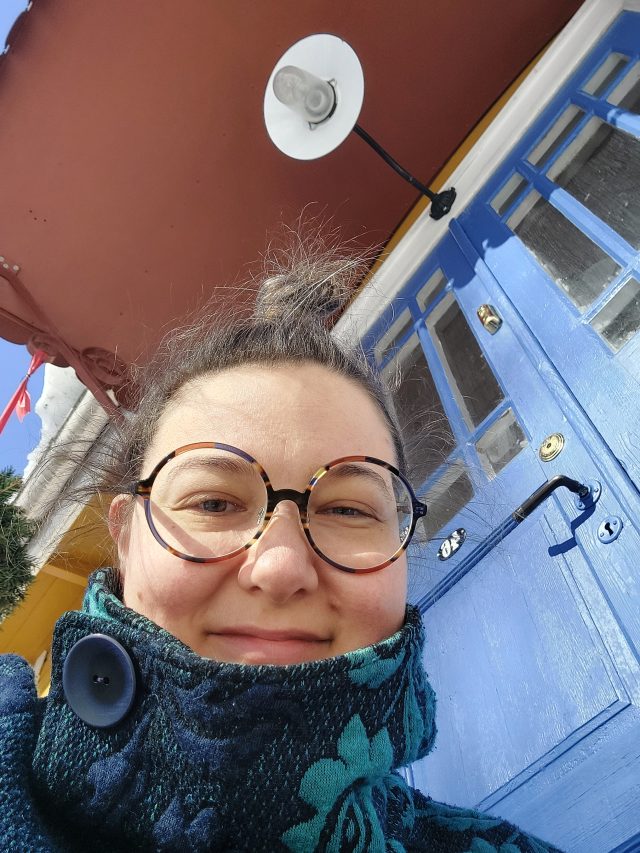Introduction to the report: Actor ecosystems and critical actors in precast concrete reuse of the ReCreate project. The full report is available here.
Authors: Lauri Alkki & Leena Aarikka-Stenroos; Tampere University
The reuse of precast concrete elements is gaining momentum as a sustainable practice in the construction sector. But what does it take to make this happen? Harnessing reuse changes the process of construction as well involved companies’ and other stakeholders, and therefore it is crucial to understand who the relevant actors are and what roles in a circular construction project are putting reuse to use. A construction project reusing precast concrete elements requires collaborative contributions from multiple complementary actors that can be considered as an “actor ecosystem” of concrete element reuse. Based on our case study examining several concrete element reuse projects from the organization and management perspective, we can share some insights on this. Let’s dive into the tasks and key actors forming the actor setting and actor ecosystem enabling reuse, driving this innovative approach.
Key tasks, actors and their roles in concrete element reuse process
To successfully reuse precast concrete elements, a variety of tasks along the full reuse process must be conducted by the construction actors with learning and problem solving-oriented and collaborative mindset. Each individual task is crucial in ensuring that the process runs smoothly from deconstruction to the final construction of new building(s) from harvested elements. Next, we explain the key tasks of concrete element reuse and the main actors contributing to them:
- Planning the Deconstruction: This task focuses on planning the deconstruction (i.e., so-called reverse construction) implementation process and related logistical aspects, ensuring that it can be carried out safely and efficiently. In this task it is also essential to plan the necessary quality assurance actions that can be implemented already at the demolition site prior to deconstruction. In addition, when planning the deconstruction, it is valuable to take inventory of elements that can be detached to begin exploring their reuse potential. Key actors in this task are typically demolition companies and structural engineering companies planning the deconstruction, its implementation, and needed initial quality assurance actions as well as architect and structural engineering companies sketching the future usage of the potential detached elements.
- Deconstruction: The actual process of dismantling buildings and extracting reusable concrete elements falls under this task. It requires specialized skills and equipment to ensure that the elements are not damaged during removal. Demolition companies with dismantling capabilities, knowledge and tools are the primary actors here.
- Logistics: Managing the transportation and storage of deconstructed elements is essential to keep the process efficient. This task includes planning the logistics of moving elements from the deconstruction site to storage and then to the new construction site(s). Logistics companies and the actors operating at the deconstruction site (e.g., deconstruction companies) as well as the actors who are responsible for the intermediate storage (e.g., concrete element manufacturing companies) and the new site where the dismantled elements are going (e.g., construction companies) often handle this task.
- Refurbishment, Quality Assurance, and Redesign: Once the elements are deconstructed, they need to be refurbished, quality checked and redesigned to fit into new architectural and structural plans in line with the client’s requirements and to ensure that the reused concrete elements meet all safety and structural standards. These tasks involve both creative and technical expertise to ensure that the elements are both functional and aesthetically safety to use such as building condition surveys already before deconstruction and after deconstruction testing the elements as well as refurbishing them to be ready to use. These tasks are closely related to the new building (partly) made from the detached and reused elements, since designers need to ensure that detached elements fit into new building designs and that necessary modifications and refurbishments can be carried out according to these designs. Manufacturing companies and structural engineering companies are most often responsible for the refurbishment and quality assurance processes, and architect and structural engineering companies are key actors in the redesigning processes with strong support from the construction company (and client(s)).
- Reuse of the elements: Finally, the actual reuse of the deconstructed elements in new construction project(s). This implementation phase involves integrating the refurbished elements into new building designs at the construction site. At this task, it is essential to coordinate logistics and schedules regarding the factory refurbishment of reusable elements and the progress of the construction site so that the elements arrive at the site at the right time, ready for installation. Overall, however, installation is mostly carried out in the same way (possible minor differences in preparatory and finishing work depending on the details of the reusable elements), regardless of whether the element is new or reused. Construction companies play a key role in this task, as they are responsible for the operation and progress of the construction site.
- Permitting and Regulation: Navigating the regulatory landscape shaping how easy or difficult it is to use the reuse principle is crucial for the success of concrete reuse projects. This task involves obtaining the necessary permits (e.g., demolition and construction permits) and ensuring compliance with local regulations (e.g., whether dismantled elements are considered waste or not, and what procedures can or cannot be used to utilize them), in collaboration with the relevant public authority and department responsible in the current situation, as well as the actors applying for the required permits. Local authorities, such as cities and their various departments (e.g. the department responsible for granting permits, developing zoning or promoting circularity through plot donation and acquisition), play a pivotal role in enabling reuse. This is achieved in collaboration with the owners of the donor and new buildings, who are responsible for applying for permits.
Depending on the reuse project phase, the division of tasks and the actors involved can vary (see Figure 1 for an example). The capabilities of each actor, their ability to collaborate, and the overall industry setting in their respective countries influence how the tasks are distributed and how the actor ecosystem organizes along the project. Furthermore, data collection, analysis, modelling, usage and sharing is a critical factor affecting positively the preservation of element value: therefore, actors should collaborate and ensure jointly that data is monitored and harnessed throughout the reuse process to support planning and implementation of each phase and reach optimized projects. In this regard, it is essential to gather relevant data to enable reuse, store the data in a way that allows for easy transfer, and ensure that all relevant actors have access to it. It is also important that these actors have the capability to analyze the data to ensure the safe usage of reused elements. Thus, open data transfer and communication ensures that actors understand what each considers valuable in the reuse process, avoiding the destruction of another actor’s value.
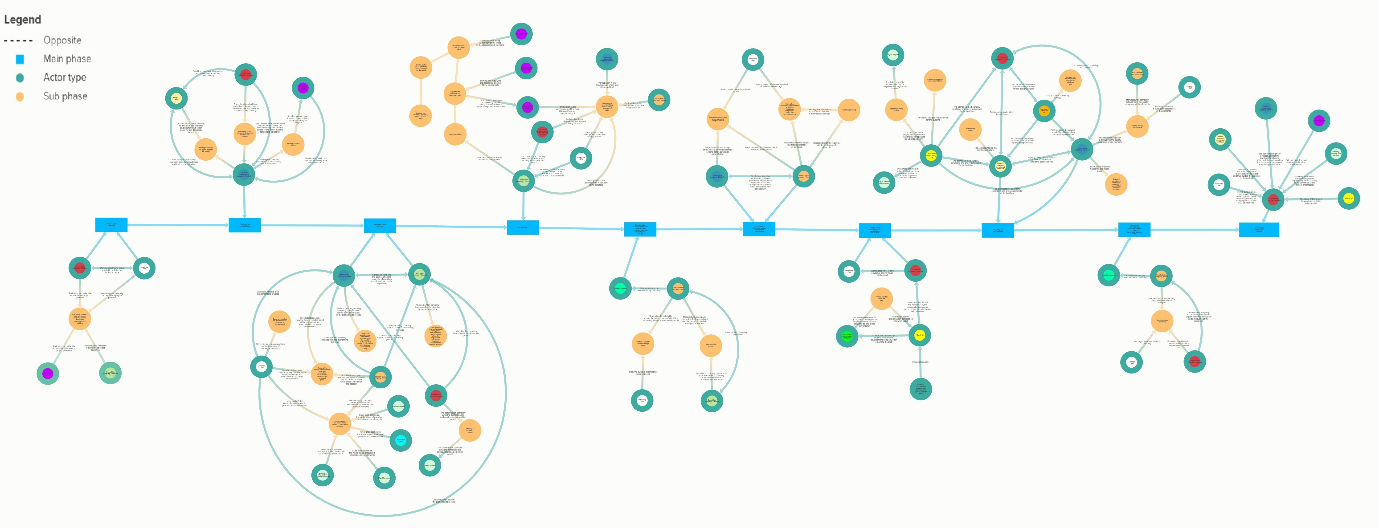
Figure 1. Example of an actor ecosystem enabling precast concrete element reuse: key actors per each process phase, their tasks and collaboration. The example is from the Finnish reuse pilot project in Tampere region.
Conclusion: the power of collaboration
The successful reuse of precast concrete elements hinges on a well-coordinated actor ecosystem with complementary skilled and collaborative minded companies and experts. Each actor brings unique expertise and competences to the table, which is why actor settings cany vary a lot depending on the case. Collaboration and knowledge sharing are essential to enable and optimize all tasks and process phases, and thus to ensure that concrete elements can be reused effectively and sustainably. All in all, as we move towards more circular construction practices, the insights from these pilot projects provide examples to think about how you should organize when planning to reuse concrete elements and repurpose existing materials to create a more sustainable world, in collaboration with skilled, future-looking expert partners.
The published deliverable and more detailed pilot projects findings can be found on the ReCreate and the studies behind this blog are also openly available here and here.

